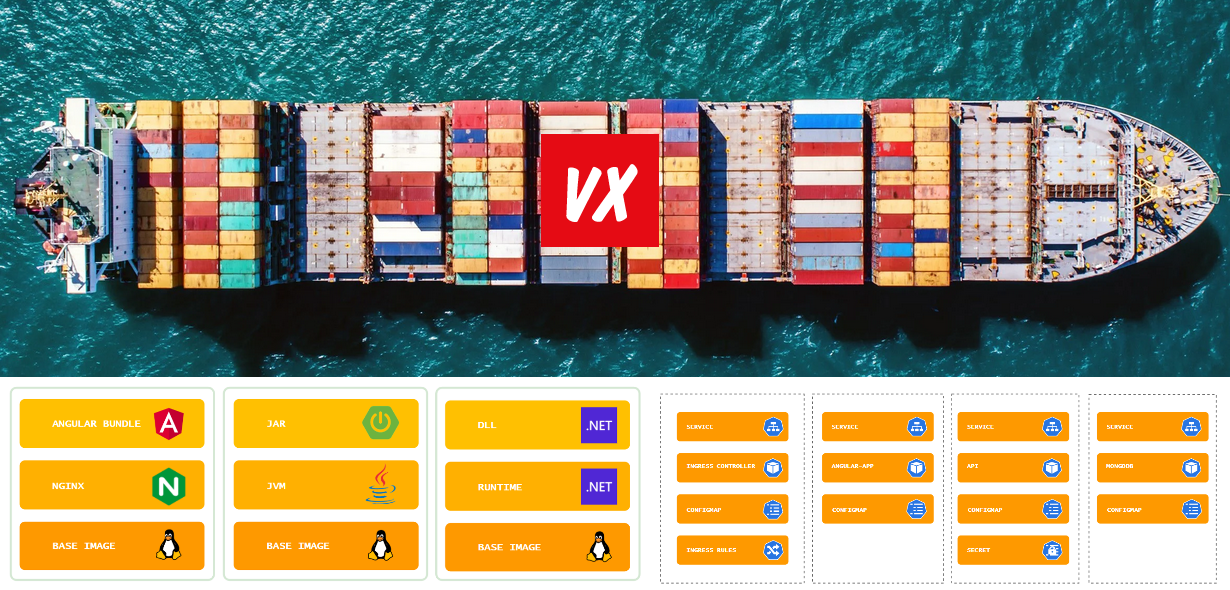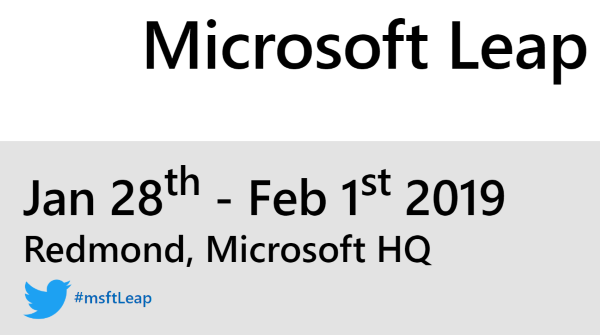
LEAP is an event aimed at architects working with Microsofts product portfolio. It focusses on gaining indepth knowledge about current products and future evolutions. The program includes five days of guided architecture-focused topics that enable you to deliver tomorrow’s solutions and allows for questions and dialogue with engineers and program managers from Microsoft.
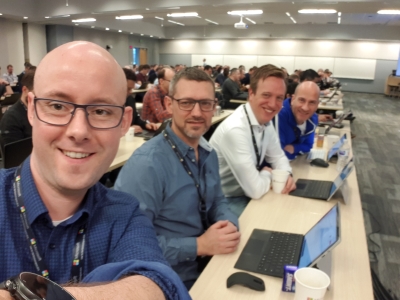
The VX Company Software Development team @ LEAP 2019
This year we (four collegues from VX Company) are attending this event and this blogposts summarizes on the topics.
The keynote
Welcome @ LEAP: Be Inspired, Connect, Learn (and take at least 3 new “things” home)
After event registration and the formal welcome by our host, Scott Guthrie kicks of with the keynote. After a high level overview of Azure with statistics backed by customer stories, Scott mentions his team pushes hard on hybrid this year. They aim to provide a consistent hybrid cloud experience with:
- Azure SQL Database Managed Instance General Available: deliver SQL Server as a Service and compatible with the full feature set but without requireing any changes to your app or solution.
- Azure Migrate (analysis and automated migration to Azure).
- Azure Stack: run Azure everywhere, at the edge and even disconnected to meet regulatory requirements.
Next generation IoT services is another focus this year. You can now connect thousands of Azure certified IoT devices
and control them through Azure IoT Central for device and security management. Other news on IoT:
- Azure Digital Twins: build next-generation IoT (Internet of Things) solutions to model the relationships and interactions among people, places, and devices.
- You can now run Azure Cognitive Services inside your own containers and even on your IoT devices.
We also look at increased developer support with GitHub Actions, one of the serverless options within GitHub. Other news on dev support:
- Keep GitHub as a separate company and make sure it remains open and the unique thing it is :)
- Azure Artifacts (maven, NPM, NuGet) for package management as a part of Azure DevOps.
- Microsoft Learn: a new way for hands-on and interactive learning.
Microservices Reference Architectures
From the Patterns & Practises team we get an insight on creating a microservices architecture with both Azure Kubernetes Service and Azure Service Fabric. The Azure Architecture Centre also has documentation on this topic: https://docs.microsoft.com/en-us/azure/architecture/reference-architectures/microservices/aks.
After the basics (what is a microservice and why would we build them?) we start with a “Bad example” based on the 3-tier model.
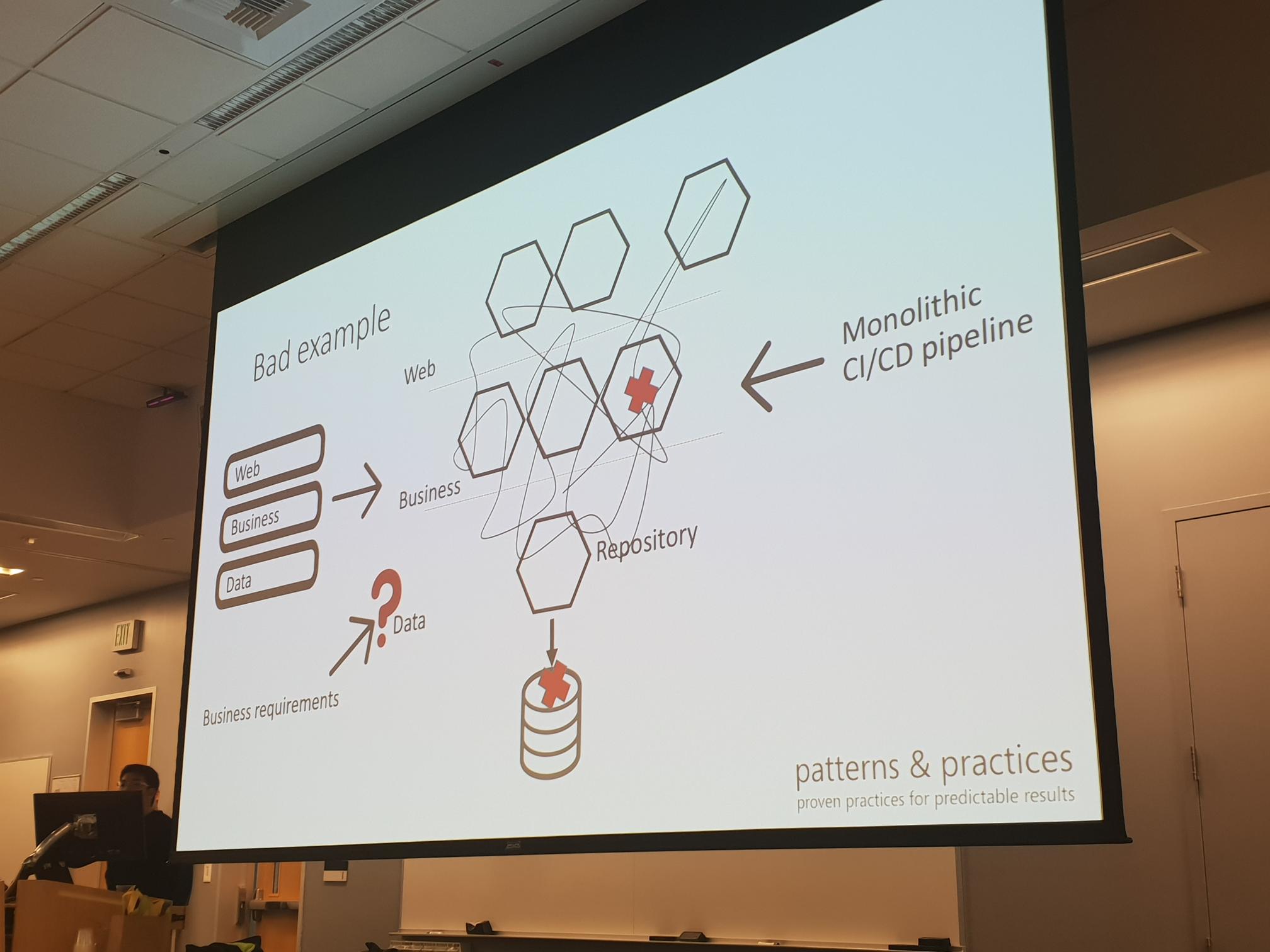
The solution to this nightmare: create a microservices architecture with Azure Kubernetes Service:

There is no single right way of doing this. Options change and microservices are still considered a new concept. Coming soon: Vertical Pod Autoscaler is now in preview as another option for autoscaling (besides Pod Autoscaling and AKS Cluster Autoscaling).
Another solution to the 3-tier model could be Azure Service Fabric:

A reference architecture for microservices based on Service Fabric is being developed, so coming soon.
Data + Cloud + ML
A talk about two decades of data innovation and finishing with Azure SQL DB Hyperscale.
- Data Warehouse to Data Lake
- The growing importance of Data Governance and how to handle GDPR scenarios. Important topics are Data Compliancy and Data Lineage
- Azure Databricks is a Spark ecosystem, integrated with Azure Datalake
- Azure Datafactory (a cloud based ETL, SSIS as a Service)
Because of regulations like GDPR, we will expect to see a deeper ingegration. Increased data security, serverless and with a unified higher level experience. Responsible Data use and data governance will require RBAC data access.
In-database analytics: we can use R code inside SQL server. This avoids getting data out of SQL and putting it back in. SQL RBAC still applies. More on this: In-server analytics.
Azure SQL DB Hyperscale, a highly scalable service tier for single databases that adapts on-demand to your workload’s needs and scales automatically up to 100TB (but can grow even beyond). It solves a lot of the scale and performance issues compared to other DB models. But is also solves important parts of the data compliancy, lineage and goverance issues. Currently in preview.
Cosmos DB
- Guaranteed low latency (<10ms for both read and write in a single region) at 99th percentile, worldwide.
- Multi model, multi master database service.
- Reserved Capacity is also available for Request Units, saving up to 65% on Azure Costs.
- You can use Azure Functions (or the SDK) to control throughput limits.
Cosmos DB relies heavily on pre-provisioning, so calculating (estimating required throughput) upfront is important.
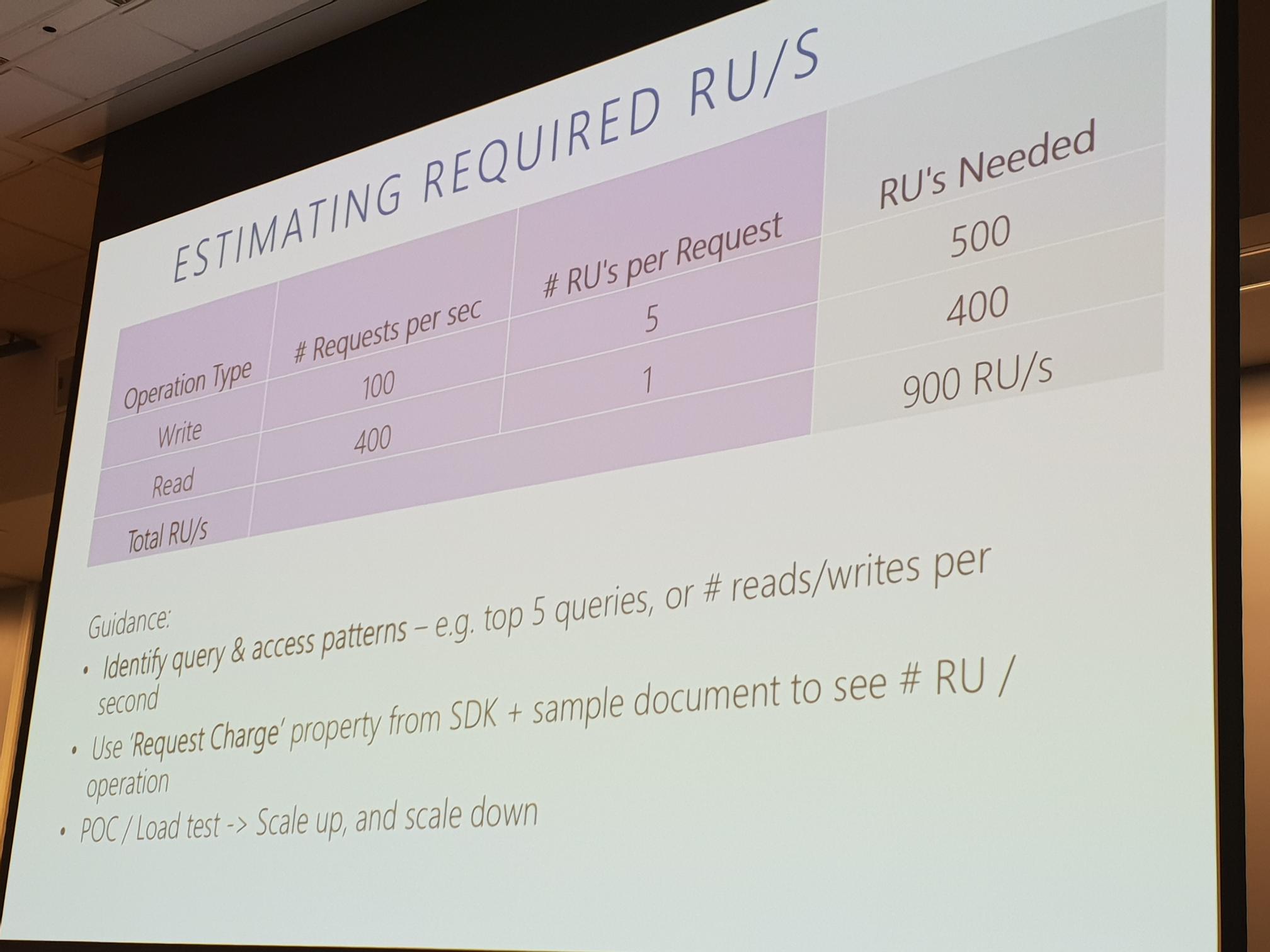
Tip: use the new SDK (.NET SDK 3.0) for calculating document and throughput costs.
Full Stack Azure Monitoring
The final session of the first day covers Azure Monitoring. Application Insights and Log Analytics are now part of a single product offering: Azure Monitor. It provides:
- Unified Monitoring
- Data Driven Insights
- Workflow Integrations

Azure Monitor is used to monitor cloud native applications. It provides monitoring at scale integrated with your DevOps (or similar) Pipelines, works across tools, languages and platforms. If used in conjunction with Azure it relates to Azure Resource Groups and components.
It can be used for Artificial Intelligence for IT (AIOPS):
Big data analytics, machine learning and other artificial intelligence technologies to automate the identification and resolution of issues.
Recent feature Azure Monitor Insights for Resource Groups, currently in preview. It provides a single entrypoint for diagnosing and triaging issues from a Azure Resource Group perspective.
Coming soon? Troubleshoot Java based application issues using the Debug Snapshots. For .NET applications, this is currently available in preview. For more information: Snapshot Debugger
That rounded up day 1, more to come.


